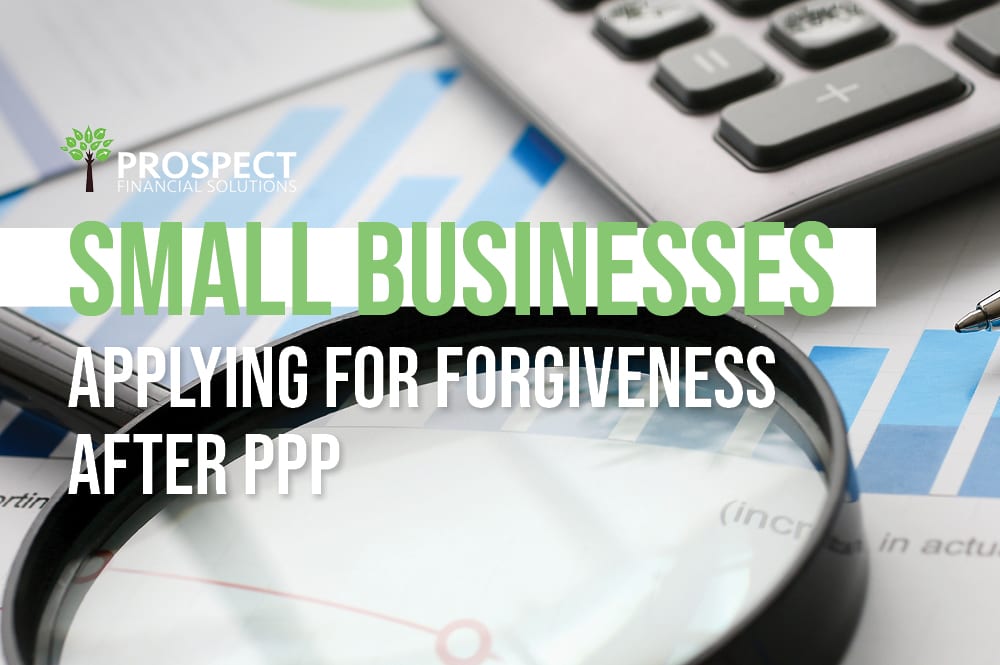Small business owners, if you’re one of the many that applied for the Paycheck Protection Program, you might be wondering what you should do now that your loan has run out — are there any reasons why small businesses should wait to apply for forgiveness? Before we discuss the benefits of waiting to apply for the PPP forgiveness as a small business owner, let’s have a brief recap of the Paycheck Protection Program, including what it is and how small businesses have benefited from it.
The PPP was part of the $350 billion handed to the small business administration as part of the CARES Act. It provided forgivable loans to cover payroll and overhead expenses, intended to keep mom-and-pop shops from folding. The PPP was designed to provide a direct incentive for small businesses to keep their workers on the payroll due to COVID-19. More information on the latter could be found here.
In order for the loan to be fully forgiven, the funds must be used for payroll costs, interest on mortgages, rent, and utilities (due to likely high subscription, at least 60 percent of the forgiven amount must have been used for payroll). For small businesses, being forgiven is based on the employer maintaining or quickly rehiring employees and maintaining salary levels. So, let’s say that you’re a small business owner who received the PPP and have used the entire loan…what do you do now?
For those who have been approved for loans and are awaiting their checks or for those who will eventually get some of the newly allocated money, many will need guidance on the best ways to put that money to use to ensure the long-term health of their businesses while also adhering to guidelines set by the federal government that will determine whether or not those loans will ultimately be forgiven.
Taxpayers who took advantage of the PPP and have now used up their loan funds or are reaching the end of their covered forgiveness period are seeking answers to what to do next. Because of this, we’ll be considering several reasons why businesses might want to wait until the end of their covered forgiveness period to submit their PPP loan forgiveness application.
If you’re a small business owner who’s found yourself in the same boat, you might be asking when you should submit your PPP loan forgiveness applications. Keep in mind that borrowers are not required to submit their forgiveness applications until 10 months after the end of their covered period, but they don’t have to wait until after the covered forgiveness period to apply for forgiveness, and they could even apply for forgiveness before the end of their covered period if they used all of the loan proceeds.
If the borrower qualifies for full forgiveness, there is no reason to wait until the end of the covered period. But, let’s talk about 3 reasons why a borrower might want to wait until the end of the forgiveness period.
- Applying for forgiveness early will not reduce forgiveness reduction. Originally, the Paycheck Protection Program covered period was eight weeks. That meant borrowers had eight weeks to make eligible payments with their loans. But, the PPP Flexibility Act (which was signed into law on June 5, 2020) tripled the covered period’s time from eight weeks to 24 weeks. If the borrower applies for forgiveness before the end of the covered period and has reduced any employee salary or wages in excess of 25 percent, the borrower has to account for the excess salary reduction for the full 8- or 24-week cover period. If you received your loan prior to June 5, you can elect to use the original eight-week covered period. Or, you can take advantage of the extended covered period to make sure you’re using your PPP loan proceeds toward eligible expenses.
- If the borrower has reductions to their forgiveness for reduced full-time equivalent employees or reduction in salary; they will most likely benefit from waiting until the end of the covered period to apply for forgiveness because the reduction applies to all qualified expenses during the covered period, even those in excess of the loan amount.
- Borrowers who have potential forgiveness reductions. They may also benefit from waiting until after December 31st to see if they’ve restored any of their full-time employees and/or salaries. This would mean they qualify for the safe harbor and are not required to reduce their forgiveness amounts. It’s possible they could lose the benefits of the safe harbors if they apply for forgiveness before December 31st.
Keep in mind that some lenders are accepting PPP application forms. Some, like Chase and PNC, are not. Your lender might be working to incorporate the SBA’s newest guidelines into the application process. If your lender isn’t ready to accept your application, you might want to hold off on filling one out. That way, you (like your lender) can follow the most current SBA and Treasury guidance to give your application the best shot of forgiveness.
To make things even easier and more accessible, this article says that a number of payroll providers are working on Paycheck Protection Program packets. These packets are filled with payroll reports that give borrowers the data they need to accurately fill out their PPP forgiveness application. Many payroll providers are waiting to put out these packets to ensure they have the most recent guidance from the SBA and Treasury.
The forgiveness applications issued by the SBA require that they be accompanied by detailed documentation and that additional documents be retained by the borrower. If the lender identifies errors in the borrower’s calculations or a material lack of substantiation in the borrower’s supporting documents, the lender is to work with the borrower to remedy the issue. A borrower should take the time to make sure they have both the accompanying documentation and the documents to be retained available at the time of the submission. Don’t put off getting the “retained” documents together.
This article further says: The SBA has a right to request that retained information as part of its review. If the borrower does not promptly provide documents, this might cause delay and possibly denial of forgiveness. Furthermore, as the rules for PPP loan forgiveness contain so many gray areas, borrowers should also document how a conclusion was reached and what guidance they used to reach the conclusion.



